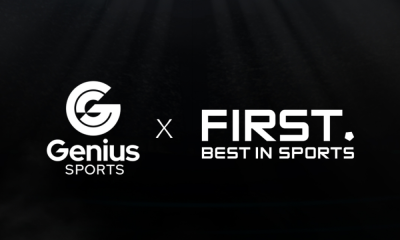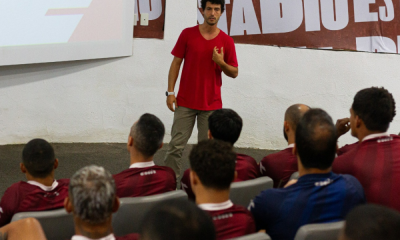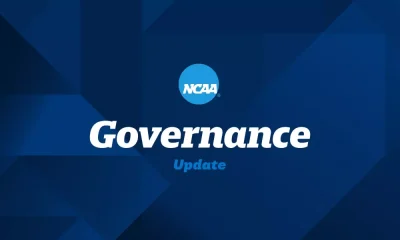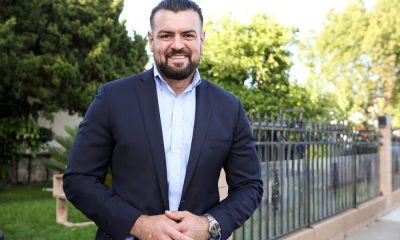Interviews
Exclusive interview with WA. Technology: LatAm’s most established iGaming solutions provider

Offering a level of expertise that few can match in LatAm, WA.Technology has firmly entrenched itself as one of the continent’s most sought-after providers. In our latest exclusive interview, we speak with WA.Technology’s Axel Antillon, Regional Director LatAm, to get the latest on market developments, as well as the level of in-depth personalization required for operators to become a true winner with local players.
For those that might not be overly familiar with WA. Technology, can you give us a brief introduction of who you are as a company?
Of course! WA. Technology is by far one of LatAm’s most established providers, with an incredibly long history of success on the continent. With our team’s 20+ years of experience here, it’s safe to say that we are now viewed as one of the “go-to” providers for the full spectrum of iGaming solutions required for any operator to be a true market leader. Our years of experience have allowed us to become fully entrenched with some of LatAm’s biggest operators and have a thorough understanding of the unique dynamics within each market.
We’re very fortunate that our team consists of top-level professionals across just about all LatAm’s major markets, each of whom have extensive experience in the B2B gambling space. This is something that I believe puts us in an incredibly strong position to not only understand the unique demands of each country, but also allows us to offer the best possible turnkey solutions for our partners across the region. Our long history of success and localised delivery here is a testament to that.
Costa Rica and Mexico are two of WA. Technology’s first LatAm markets. How important have these two been for your journey on the continent?
Costa Rica is ultimately where our journey started. But it is actually Mexico which has proved to be our major platform for expansion in the early years of WA. Technology. And there are a number of reasons for that.
It goes without saying that sports, and particularly gambling, are very much ingrained into Mexican culture. The market has been regulated since 1947, meaning that players are well-versed in gambling products – they know what they like, what they don’t like, and what they expect from operators. From an operator perspective, this ultimately means you don’t have to spend time educating bettors on the different types of products available to them.
If you look at the market’s projections over the next five years, revenue is expected to hit $3.09bn (USD) by 2029, which is very promising. Data from Zendesk Consultancy also suggests that 4.2/10 Mexicans regularly take part in gambling activities – if you compare this to the wider Latin American region, the average is 3.5. This shows just how popular gambling is across Mexico.
The market proved to be a fantastic platform for our expansion further south, with major successes in Brazil and Ecuador following soon after. Peru and Colombia will definitely be next for us – but more on that later.
Given you’re now one of the continent’s most sought-after providers, what’s your current take on market trends and growth outside of Brazil? Which countries offer the best examples of regulation done correctly?
If we start with Mexico, we have seen high volumes of activity across both lottery and casino. Both verticals have proved to be incredibly popular with players. Another trend we have noticed is the increasing adoption of mobile. Of course, this has always been prevalent in the major cities – but that’s now expanding to rural areas at pace, and we’re capitalising on this trend majorly as the balance shifts from retail. Of course, this preference for technology-first experiences makes Mexico an incredibly attractive proposition for operators – and one that we’re leading the way on.
In Peru, the younger, tech-savvier audience is also showing a strong preference for mobile betting compared to retail and desktop. That’s an interesting insight for us given the previous dominance of retail, but that’s changing fast. Looking at demographics, the market also has a fast-growing middle-class which is growing year-on-year, many of whom are not only familiar with the range of betting products at their disposal but also enjoy traditional sports, casino and esports, making this a great market for anyone looking to expand their Latin American footprint.
From a B2B perspective, Peru’s regulatory framework is also very favourable, – and we really commend the government’s regulatory authorities. Introduced in 2023, the legislation gives a solid base for people to invest in the market and for operators to enter and paves the way for a successful long-term operation.
Ecuador’s regulation is again very conducive to good business. The liberal approach allows operators to offer a vast range of betting products, which has really diminished the black market, where players cannot be protected. While the country has flown under the radar for many, it’s definitely one to watch.
Next up is Colombia, which was the first market to regulate in Latin America and has undergone tremendous growth since online was regulated by ColJuegos in 2016. The richness of its festive culture, alongside the acceptance of gambling, makes it arguably a shining example of a market done right. Colombia is a country already accustomed to bingo and lotteries, but still with a lot of growth projection on the strategic level. Live casino is also becoming particularly popular here – with ColJuegos estimating that it was already taking 8% of the market back in 2023.
Peru and Mexico have both been incredibly popular markets in the news recently. What would you say are your main USPs here?
In Mexico, one of our offices is located in Reforma – an area that is very central in Mexico City. Our legal team for this market has extensive knowledge of the local regulations and are able to help operators to obtain a licence from Secretaría de Gobernación (The Ministry of Interior).
We are also able to support our partners when it comes to integrations, including payment gateways, which really sets us apart from the crowd. In addition, we belong to AIEJA, the Gambling Association in Mexico, which helps connect operators to various different suppliers. On top of that, we also have a deep understanding of player preferences and the culture. We know how to reach new audiences; what players want and how best to achieve that too. Localisation is key to our strategy in every LatAm market, and Mexico is no exception.
In Peru, we are currently in the process of receiving our certifications. We are about to conclude the vendor registration, which is expected very soon, which will open the doors for new growth at WA. Technology.
This market has been on our radar for many years now. We have been researching it extensively to fully understand how we can gain a competitive edge and how we can best serve our partners. From an operator perspective, this market is high on the agenda for many domestic and international companies already – in fact, the regulator received 145 licence applications during the pre-registration phase alone!
Peru’s gaming industry has also been growing at a double-digit rate over the last five years, with casino leading the way, followed by sports betting and lottery. Market data suggests that revenue for the country’s online gambling markets could hit US$314.8m this year, with that figure expected to grow to $403.5m by 2028. If the market continues to grow at this pace, the opportunity for WA. Technology will be huge!
It’s safe to say that Peru will undoubtedly be one of our main target markets over the next few years alongside Brazil and Colombia, where we’re also in the process of gaining certification. We’re very excited to see what these markets hold for us!
And what are your USPs for both Ecuador and Costa Rica – given we see less media attention on these markets?
In a word, localisation. This is absolutely essential for any market, but particularly in Latin America where each individual jurisdiction is so unique.
In both Costa Rica and Ecuador, we have been closely monitoring regulatory developments and changes in player behaviours – research that has allowed us to support our own commercial initiatives and help shape our future partnerships with operators in the market. We also offer localised payment solutions, which is incredibly important. There’s not much point in offering a product if your players can’t deposit or withdraw their winnings, right?
We also offer bespoke betting markets for operators across both of these markets. I don’t just mean tweaking the language to suit the local dialect. We provide everything that operators need to engage with players across these markets – be it markets on local football leagues, or products tailored to sports that are popular within that particular market.
This goes beyond sports betting too. On the casino side, we offer a tailor-made solution to operators so they can effectively meet the needs of their player base. Casino games that might be popular in Mexico might not gain the same traction in Costa Rica, for example. Again, this is really where the retail heritage comes into play – and it’s absolutely essential to understand how the unique retail legacy in each market has shaped slot preferences for each country. In a competitive environment of fine margins, edges like these mean we can provide the tools for our operator partners to quickly gain an edge.
Speaking of player preferences, we’ve seen a shift towards the online space in recent years. How do you keep up with changing trends?
As we’ve already covered, you have to remember that many of these markets started off solely focused on the brick-and-mortar space. Players would visit casinos and betting shops, and that’s how they engaged with gambling since the 1990s. Now, however, we have a mix of both online and retail with many of the land-based players now transitioning away from the more social-based area of retail to mobile betting that players can enjoy from home, on the commute or anywhere in between.
To capitalize on this, and after extensive research into what these players enjoyed from their land-based experiences, we asked our casino team to integrate our brick-and-mortar offer into the online space. This has worked incredibly well because it allows players to recognise their favourite products and games and enjoy them from the comfort of their own home.
Last but not least, as a major takeaway for our readers – how can we showcase that you are the best provider when it comes to understanding the market?
We have already touched upon localisation, as that’s a major point for us that no outside platform provider can match. We are demonstrating this by offering local currencies, payment service providers, languages, local betting markets and even the creation of “specials” – betting markets that have been developed particularly for one jurisdiction. For example, we have our own dedicated teams and models to price up the likes of Mexican wrestling, the famous “luchadores” – which again, very few outsiders can match in detail like us!
It also goes without saying that our WA.Platform is also the most comprehensive, solid platform that is available to any operator looking to make a name for themselves on the continent. We offer both scalable and customisable solutions, meaning that operators can continue to drive future growth as they continue to expand their international footprint.
Interviews
Portrait of a Fraudster Then and Now: How Scammers’ Habits and Tactics Are Changing
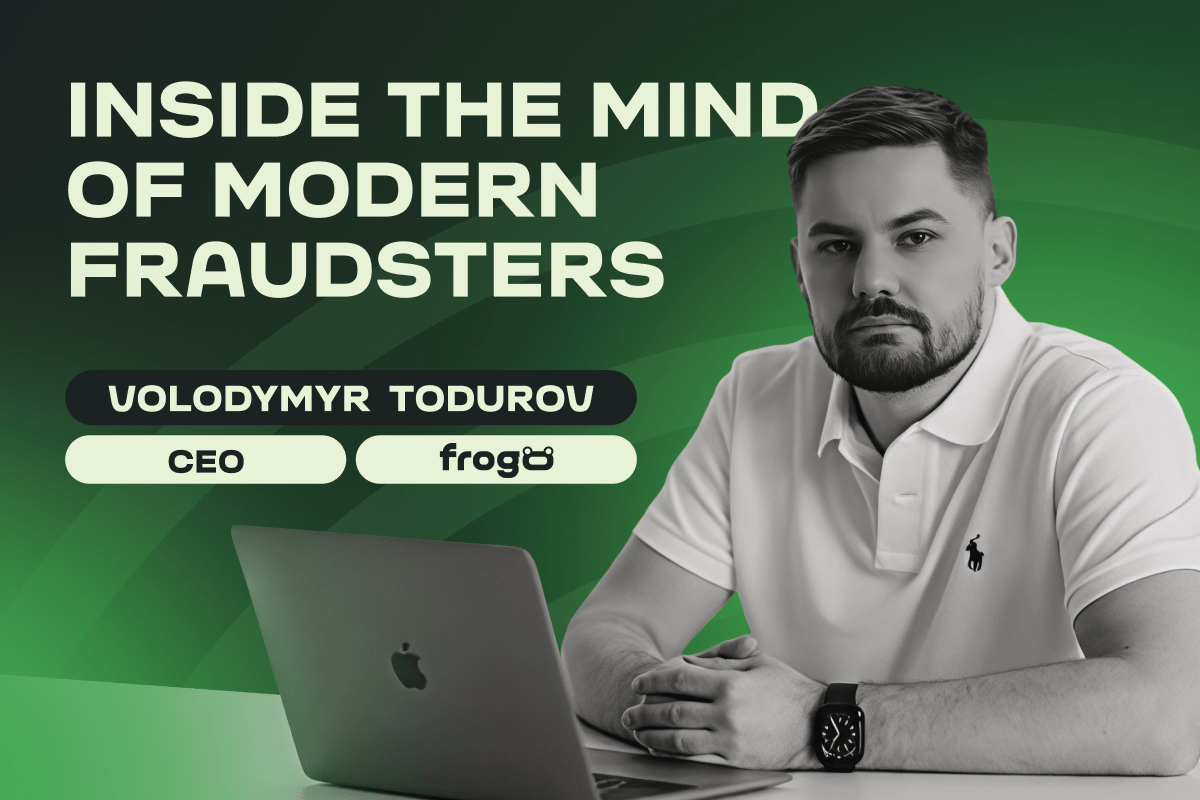
Fraud in the iGaming sector is no longer the work of lone opportunists. Today’s scammers operate in well-organized, tech-savvy networks – quietly exploiting systems that weren’t built to catch them. And as the digital economy grows, so too does the complexity of fraud schemes targeting gaming operators.
Amid this evolving threat landscape, Frogo has emerged as a company redefining how fraud prevention should work. We spoke with Volodymyr Todurov, CEO at Frogo, to get an inside look at how fraudsters are changing their tactics – and what operators can do to stay ahead.
Fraudsters evolve fast – how does your system stay one step ahead without overwhelming teams with false alarms?
Absolutely, the landscape of fraud is constantly shifting and staying ahead requires more than static rules. At Frogo, we’ve developed a dynamic system that adapts in real-time to user behavior and transaction contexts. Our platform learns from both fraudulent and legitimate activities, enabling it to distinguish between the two more effectively. This approach reduces false positives and ensures that our clients’ teams can focus on genuine threats without being bogged down by unnecessary alerts.
Can you walk us through a real-world case where your platform uncovered a fraud scheme traditional tools missed?
Absolutely. One notable case involved a large-scale bot attack targeting SMS-based fraud vectors. Initially, our standard device ID-based defenses helped neutralize the first wave of the attack. However, the adversaries quickly adapted, altering their emulation tactics to bypass traditional checks. At that point, conventional methods were no longer sufficient to detect the evolving fraud.
We responded by implementing a dynamic anomaly detection framework. This involved redefining detection signals in real-time using IP intelligence and deep device fingerprint attributes – areas where our proprietary data collection algorithms provided a significant edge. By anchoring detection logic to more granular and resilient signals, we were able to recalibrate thresholds dynamically, ensuring legitimate users weren’t impacted.
The results were decisive: bot attack efficiency dropped sharply from over 80% to just 3.5%.
What’s something about fraud detection that most businesses get wrong? And how does Frogo challenge that?
A common pitfall we see is operational rigidity – many businesses rely on static rules and general-purpose triggers that result in high false positive rates. This not only burdens anti-fraud teams with unnecessary manual reviews but also degrades the experience for legitimate users, especially loyal or VIP customers.
For example, it’s typical to see blanket rules like “manually verify all payouts over X euros.” While that may seem prudent, in reality it’s inefficient. It overlooks low-value, high-frequency fraud – such as bonus abuse – and disproportionately flags legitimate high-value players.
At Frogo, we take a different approach. Our system adapts rules dynamically based on customer behavior and segmentation. A trusted VIP user with a long-standing reputation shouldn’t be reviewed multiple times a day. But if a wave of new €5 accounts starts exhibiting bonus-hunting behavior, they should run immediate scrutiny – regardless of transaction size.
By aligning detection logic with behavioral context and player reputation, we reduce noise, increase fraud catch rates, and protect real users from unnecessary friction.
How does Frogo automate risk logic without sacrificing the flexibility businesses need to reflect their unique policies and traffic patterns?
At Frogo, we don’t see automation and customization as opposing forces – they operate in different dimensions. Our focus is on automating the customization of risk and scoring policies in a way that respects each client’s specific risk appetite and user behavior.
We achieve this through dynamic triggers. Rather than hardcoding arbitrary rules – like “five failed top-ups per minute equals fraud” – we apply adaptive scoring thresholds that align with real-world usage patterns.. For example, our system might detect that, for a certain payment method and user segment, more than 1.3 failed top-ups per minute is statistically anomalous – because it exceeds the 98th percentile of historical behavior.
But that same trigger adjusts automatically. If the next day a payment provider experiences a technical issue and normal users start retrying more often, the threshold might shift to 2.7. What was anomalous yesterday may no longer be today – and our system adapts accordingly to reflect evolving traffic patterns.
As a result: the clients retain full control over their risk strategy, while Frogo ensures their policies scale efficiently, adapt in real time, and minimize false positives – even in volatile traffic conditions.
Beyond detection – how does Frogo help companies investigate and understand fraud at a strategic level?
Detection is just the beginning. Frogo’s graph-based forensic tools and AI models provide a comprehensive view of the relationships between accounts, transactions and behaviors. This allows companies to identify patterns and vulnerabilities that might not be apparent through traditional analysis. Our analytics layer offers insights into trends and forecasts, enabling businesses to understand the broader context of fraudulent activities and make informed strategic decisions to mitigate future risks.
Fraud might be getting smarter, but so are the solutions built to fight it. Platforms like Frogo are helping operators move beyond reactive security measures and into a space of strategic, data-informed defense. In an industry where trust is everything, that shift might just be the difference between staying one step ahead – or falling behind.
Disclaimer: Frogo’s fraud prevention solutions are developed in full compliance with applicable data protection laws, including GDPR. All behavioural analysis is performed on anonymised or aggregated data, with full transparency and control provided to our clients.
The post Portrait of a Fraudster Then and Now: How Scammers’ Habits and Tactics Are Changing appeared first on European Gaming Industry News.
Interviews
Inside the Matrix: A Conversation with EveryMatrix Founders on Europe, Expansion, and Staying Hands-On
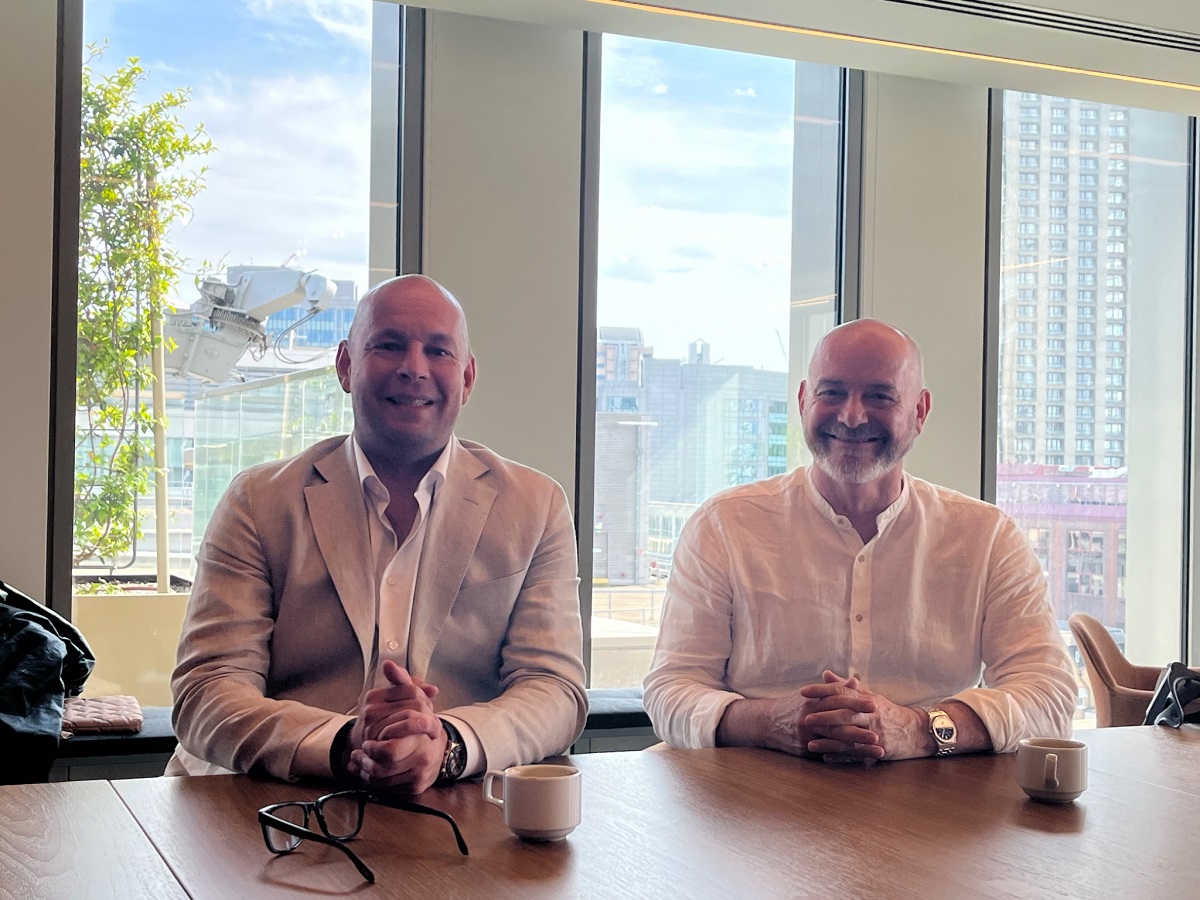
By Maria Emma Arnidou, Event Marketing Director at HIPTHER, for the European Gaming Media
During the recent EveryMatrix Media Day at the company’s opening of their new London office, Co-Founders Ebbe Groes (CEO) and Stian Hornsletten sat down with press to share key insights into their strategic vision. In this exclusive Q&A, we explore their views on the European Market, the evolution of EveryMatrix’s business model, leadership philosophy, and the company’s experience in the ever-evolving U.S. market.
Europe is filled with local heroes. It’s far more fragmented than most people think.
You discussed emerging markets in your presentation. What about Europe – is it considered saturated, or are there still areas of growth?
Ebbe Groes: I really don’t think Europe is saturated at all. In fact, big parts of it are still underdeveloped. Take France for example, it doesn’t allow online casino. Germany has effectively banned it. That’s two of Europe’s three largest economies where casino is either outlawed or nearly impossible. So yes, there is still plenty of room for growth.
Stian Hornsletten: And the market is getting more concentrated around a few bigger players, but even then, it’s not as centralized as in the U.S.
Ebbe Groes: Exactly. Europe is filled with local heroes. You won’t find many players dominating across the board. Kindred, Betsson – they’re strong, but when you go country by country and look at market share, the picture is very fragmented. Even with the economies of scale in marketing – say you sponsor a Premier League team – you’re still not getting the full return unless you’re present across multiple markets. That’s what makes Europe so different from the U.S., where a few big players hold all the cards.
We started with a sportsbook. Now we’re building an ecosystem.
EveryMatrix today operates across multiple verticals with a deeply diversified portfolio. Was this the vision from the start, or did it evolve as the company grew?
Stian Hornsletten: The vision definitely evolved quickly as we grew. We started with OddsMatrix, a B2B sportsbook product that was meant to be an off-the-shelf, managed solution – something that didn’t exist back then. Within a year, we had already expanded into turnkey and PAM solutions. By 2010–2011, we had launched the CasinoEngine and started specializing in product verticals.
We’ve always been very innovation-driven. We keep developing new products – some of which are still under wraps – and R&D remains one of the most exciting parts of what we do. Today, most of our top 10 clients are turnkey. While we still offer standalone modules, our growth has come from cross-vertical synergy.
Despite this scale and complexity, you both remain deeply involved in the company’s day-to-day operations. How do you manage to stay on top of everything across products, people, and processes?
Ebbe Groes: It helps that we’ve been here from the start. I wouldn’t want to be hired into this role now and try to learn everything from scratch – but I’ve had 18 years to absorb it all. We’ve built the company in a way that each vertical operates almost like its own business. For example, the sports division has its own CTO, product team, trading team, and even its own support function. That independence gives us breathing room.
It allows me to focus on high-level strategy, like acquisitions – take FSB, for instance. That required a lot of focus at the start, but eventually it will transition into the core business and require less direct involvement.
Stian Hornsletten: Over the years, we’ve also developed strong planning, reporting, and KPI structures across the business. That consistency makes it easier to monitor everything and integrate new divisions. Whether we open a new office or onboard a new team, we already have the systems in place to support them.
Ebbe Groes: And the same goes for finance and HR. When we opened the London office, the HR team already knew how to handle it – we’d opened three the year before. That kind of maturity allows us to move fast without creating chaos.
“In Europe we have 150 competitors in content; in the U.S., maybe 10.”
And what about the U.S. – a market many see as the holy grail of iGaming? What’s your current position there?
Ebbe Groes: To be honest, the U.S. was a tough lesson. We entered hoping to provide a full turnkey solution, but the market didn’t evolve the way we expected. Many well-funded B2C operators pulled out, and that left little demand for companies like us to offer the full stack. We pivoted to focus on one thing: our own gaming content.
Stian Hornsletten: We’re now live in four out of five regulated U.S. states for our own content, and we have agreements with all the major operators. Some new games from SlotMatrix are set to launch by summer, and they’ve already shown strong performance elsewhere – which gives us hope. If we manage to capture even 1–2% market share with our own content, that would already be meaningful.
But it’s been a long and costly process. Every state has its own regulatory requirements, separate hosting, and certification needs. And if one state’s not ready, operators won’t promote your games nationally. It’s frustrating, but it also reduces competition. In Europe we have 150 competitors in content; in the U.S., maybe 10. So if we can endure, there’s long-term potential.
The post Inside the Matrix: A Conversation with EveryMatrix Founders on Europe, Expansion, and Staying Hands-On appeared first on European Gaming Industry News.
casino
Review Fatigue Is Real: How to Make Casino Comparisons Clear, Honest, and Huma

Sebastian Jarosch is the founder of Mithrillium Media Ltd, and a very famous figure in the iGaming industry. His contributions to the market have been immensely influential. Jarosch has overlooked several projects relating to the online gambling market, most notably those involving affiliates. Because of his past works, we believe he is uniquely qualified to address the topic of Review Fatigue, that seem to be plaguing the industry right now.
Actions speak louder than words. And Jarosch’s actions have earned him several of the most notable industry awards. Among the most notable are the Casinomeister 2020 Awards for Best Casino Group, the AskGamblers Awards for Best Partner in 2021, and the Affpapa Awards Affiliate Programme of the Year 2022.
Interview Questions:
What is “review fatigue,” and why do you think it’s becoming a growing issue in the iGaming space?
Review fatigue happens when players are faced with repetitive, overly long, or generic content. With so many casinos offering similar bonuses, games, and licensing, users quickly lose interest if every review sounds the same. Many reviews lack real insight and simply list features without context, often sounding too good to be true. As a result, players tend to skim or move on entirely, especially if they’ve already seen the same structure and wording on multiple other sites.
How can overly technical or overly promotional content alienate users instead of helping them?
When content is too technical, it can confuse or intimidate newcomers. Ideally content is educational and written with the player in mind. On the flip side, a sales pitch feels dishonest, especially to experienced players who know what to look for. Users are looking for clarity and guidance, not marketing sugar coated casinos. If a review sounds like it’s trying to sell rather than help, it erodes trust immediately. Players want transparency, real pros and cons, not just buzzwords.
What are the most important things players want to see in a casino comparison, and what can we safely leave out?
Players want to know the promotions, payment methods, withdrawal speeds, licensing, game variety, and reliability of a casino. They also care about things like support quality, KYC, ownership, RTPs, and real player feedback. What they don’t want is generic content that could apply to any casino and offers no real value. Sites like Casino-Groups help players pick the right casinos based on individual preferences.
How do you balance clarity with completeness when writing or designing reviews?
It’s all about prioritizing information and guiding the reader. We aim to answer the most important user questions right at the beginning, often using summary tables to make things easier to digest. More detailed information comes later for those who want to dive deeper. It’s important to avoid walls of text and explain complex terms in plain language. The goal is to give users exactly what they need to know, without bombarding them with unnecessary information.
Do players trust shorter, more digestible content more than long-form reviews today? Why or why not
Shorter content tends to convert better because users find what they’re looking for quickly, without digging through long paragraphs full of filler. Dense, meaningful content with no waste often performs best. A short, clear, and well-structured review can build more trust than a long one filled with fluff. That said, some players do enjoy longer reviews, especially when they’re broken up with visuals, clear sections, and genuinely useful insights.
What role does tone of voice play in making reviews feel more human and less “salesy”?
A review should feel like it’s written by a real person who’s an expert in the field, not by ChatGPT or a salesperson. We use conversational language where possible and speak directly to the user. If something’s bad or a bonus is just average, it needs to be mentioned. That kind of honesty builds far more credibility than flashy design or empty buzzwords.
How do you verify and present information (e.g., licensing, terms, payment speed) in a way that’s both accurate and user-friendly?
We manually verify everything by signing up, testing support, and reading the fine print. We also check licenses through official registries and monitor user feedback on watchdog sites. To present the information clearly, we use tables, lists, screenshots, and both internal and external links to relevant pages. All our reviews follow a consistent format so players know what to expect and can easily find the details they need.
Have you experimented with visual elements like comparison tables, badges, or rating meters to reduce cognitive load?
Pictures speak a thousand words and help break up content into smaller, more digestible sections, reducing review fatigue. We use comparison tables for things like bonus terms, game selection, and payment methods. Every review includes a rating, and we apply badges to highlight our top casinos. This makes it easier for users to compare options at a glance and make smarter decisions with less effort.
What strategies do you use to keep review formats consistent while still personalizing the experience for different user types?
We follow a consistent structure that works well for both SEO and conversions. However, if a specific area needs emphasis or additional context, we’re happy to deviate from our standard format to ensure topical completeness. Some casinos offer unique features that deserve extra attention, and in those cases, we’ll add dedicated sections. The framework is consistent, but we stay flexible where it counts.
Looking ahead, how do you think casino reviews will evolve to meet changing user expectations and attention spans?
We’ll see more interactivity, personalization, and smarter use of data. Reviews could adapt in real time based on user preferences, highlighting crypto options for one user and game selection for another. AI chatbots may help users find the best match and answer questions about a casino instantly. Integration with platforms like Discord or Telegram where players can exchange themselves could also make reviews feel more social and trustworthy. Reviews need to become sharper, more authentic, and more genuinely helpful than ever before.
The post Review Fatigue Is Real: How to Make Casino Comparisons Clear, Honest, and Huma appeared first on Gaming and Gambling Industry in the Americas.
-

 Australia7 days ago
Australia7 days agoVGCCC: Minors Exposed to Gambling at ALH Venues
-

 Central Europe5 days ago
Central Europe5 days agoGerman Federal Government Significantly Increases the Budget for Games Funding
-

 Africa7 days ago
Africa7 days agoSA Rugby Renews its Partnership with Betway
-

 Eastern Europe6 days ago
Eastern Europe6 days agoThunderkick enhances presence in Romania through MaxBet partnership
-

 Croc’s Lock7 days ago
Croc’s Lock7 days agoFBM® unveils golden treasures in Mexico with Croc’s Lock™ bites
-

 BETBY6 days ago
BETBY6 days agoBETBY EXPANDS LATAM FOOTPRINT WITH MOBADOO ESPORTS PARTNERSHIP
-

 Compliance Updates7 days ago
Compliance Updates7 days agoHonolulu Mayor Signs New Laws Targeting Illegal Game Rooms
-

 California State Assemblymember Avelino Valencia5 days ago
California State Assemblymember Avelino Valencia5 days agoNew Bill in California Could End Online Sweepstakes Gaming






